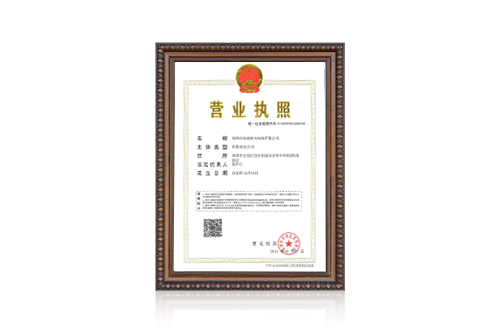
Thin film cells are the core unit of photoelectric conversion. However,
they need to be packaged and protected and made into photovoltaic modules to
meet the requirements of practical applications (mechanical performance and
stability, etc.). However, thin film battery modules require a large amount of
high-molecular organic polymer materials such as EVA or PVB. This article uses
new thin-film module design technology to reduce or even eliminate the use of
these high-molecular organic chemical materials, and basically uses inorganic
materials, making thin-film photovoltaic modules more efficient. Environmentally
friendly and economical.
I. Introduction
Thin film cells are the core unit of photoelectric conversion. However,
they need to be packaged and protected and made into photovoltaic modules to
meet the requirements of practical applications (mechanical performance and
stability, etc.). However, thin film battery modules require a large amount of
high-molecular organic polymer materials such as EVA or PVB. This article uses
new thin-film module design technology to reduce or even eliminate the use of
these high-molecular organic chemical materials, and basically uses inorganic
materials, making thin-film photovoltaic modules more efficient. Environmentally
friendly and economical.
2. Classification of conventional thin film batteries
Usually thin film batteries are divided into the following categories:
amorphous silicon, gallium arsenide III-V compounds, cadmium sulfide, cadmium
telluride and copper indium gallium selenide thin film battery components. GaAs
is a III-V compound semiconductor material. Its energy gap is 1.4eV, which is
exactly the value of high absorption of sunlight. It matches the solar spectrum
well and can withstand high temperatures. Under the conditions of 250°C, the
photoelectric conversion performance is still the same. It is very good, with a
maximum photoelectric conversion efficiency of about 30%, and is particularly
suitable for high-temperature concentrating solar cells.
CdTe is a II-VI compound semiconductor with a band gap of 1.5eV, which
matches the solar spectrum very well. It is most suitable for photoelectric
energy conversion. It is a good PV material with high theoretical efficiency
(28%) and very stable performance. It has always been valued by the photovoltaic
industry and is a thin-film battery with rapid technological development.
Cadmium telluride is easily deposited into a large-area thin film and the
deposition rate is also high. CdTe thin film solar cells are usually based on
CdS/CdT e heterojunction. Although the lattice constants of CdS and CdTe differ
by 10%, the heterojunctions composed of them have excellent electrical
properties, and the solar cells produced have a fill factor as high as FF
=0.75.
Amorphous silicon thin film batteries are generally deposited using PECVD
(Plasma Enhanced Chemical Vapor Deposition) method to decompose and deposit
high-purity silane and other gases. This manufacturing process can be
continuously completed in multiple vacuum deposition chambers during production
to achieve mass production. Due to the low deposition and decomposition
temperature, thin films can be deposited on glass, stainless steel plates,
ceramic plates, and flexible plastic sheets, making it easy to produce in large
areas and with low cost. The structure of the amorphous silicon-based solar cell
prepared on the glass substrate is: Glass/TCO/p-a-SiC: H/i-a-Si: H/n-a-Si: H/Al.
The structure of the amorphous silicon-based solar cell prepared on the
stainless steel substrate is: The structure of silicon-based solar cells is:
SS/ZnO/n-a-Si:H/i-a-Si(Ge):H/p-a-Si:H/ITO/Al.
Copper indium gallium selenide (CIGS) thin film solar cells are a new type
of photovoltaic cell product that has attracted much attention due to their high
efficiency, no degradation, radiation resistance, long life, and low cost.
Currently, the National Renewable Energy Laboratory of the United States A
battery with a maximum efficiency of 19.9% was prepared using a three-step
co-evaporation process on a glass substrate. Recently, CIGS small-area cell
efficiency has set a new record, reaching 20.1%.
3. Structural design of new thin film battery components
The structural design of the new thin film battery module is shown in
Figure 1:
The structure description is as follows:
First layer: light facing surface, using high transmittance photovoltaic
conductive glass
Second layer: Conductive glass uses coating technology to produce thin-film
photoelectric conversion units (thin-film batteries).
The third layer: Filling with nitrogen or other inert gases protects the
thin film battery from oxidation and corrosion.
The fourth layer: back glass, made of ordinary tempered glass.
Component borders and surroundings:
1) A glass component that is integrated with the front glass can be used,
and a component that is integrated with the back glass can be used on the back.
The front and back components are mechanically interlocked with each other.
Silicone-based sealant seals.
2) Separate glass components or metal components can be used for sealing
with silicone sealant.
3) The contact surfaces between components and components require sealing
and mechanical protection.
5. Conclusion
1) This new thin film module structure eliminates the use of EVA and PVB,
and fills inert gases such as nitrogen to chemically protect the thin film
battery, thereby greatly reducing the application of polymer organic
materials.
2) For the frame, the aluminum frame is abandoned and integrated glass
components are used for connection and sealant sealing to ensure mechanical
requirements, transportation and installation requirements.
3) This component can meet the application requirements of building
integration (height is limited), and can also be used in ground power stations,
street lights, etc.
4) Considering the mechanical requirements, the back glass can be filled
and modified to meet the mechanical properties such as toughness, bending, and
tensile strength of the component.
5) Environmentally friendly and economical.
Read recommendations:
6F22
How Lithium Batteries Deal with Inconsistencies
Unveiling the Advantages of High - Performance Lithium - Ion Batteries
18650 battery 3.7v 3500mah
r6 battery












































 360° FACTORY VR TOUR
360° FACTORY VR TOUR
 Whatsapp
Whatsapp
 Tel
Tel Email
Email TOP
TOP